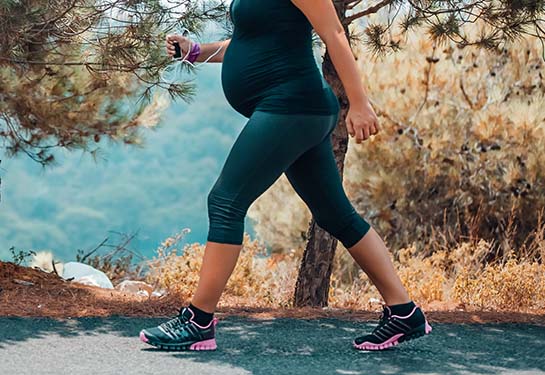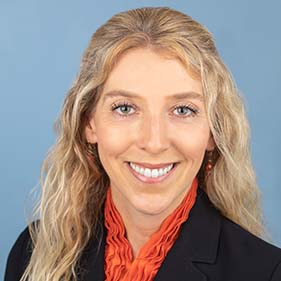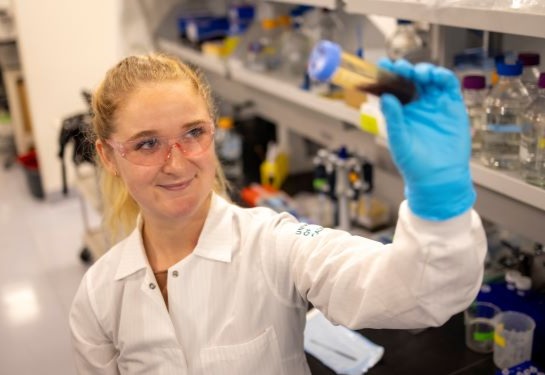Study explores health effects of wildfire exposure on babies and pregnant people
B-SAFE is recruiting pregnant people from Northern California exposed to Dixie, Caldor and other fires
Sage Po-Ruff was about eight months pregnant when she noticed a post on her Facebook feed for a study at UC Davis Health that explores the impact of wildfire exposure on pregnant people and babies.
“What interested me was being able to study the effects of wildfires in a more global sense – not just what happens when your house burns down, but how this is affecting all Californians,” explained the new mom, who lives in Sacramento.

Po-Ruff decided to call and enroll in the B-SAFE (Bio-Specimen Assessment of Fire Effects) study. The research team at the UC Davis Environmental Health Sciences Center has been analyzing hair, blood and other samples from pregnant people and their newborns since 2017.
The study is currently recruiting new participants from Northern California who were pregnant during last year’s wildfires. That includes the massive Dixie and Caldor fires, which led to weeks of hazardous air quality in many parts of the country.
“Pregnancy is a particularly vulnerable period for the mother and the developing baby, and ambient air pollution exposure during this time has been associated with adverse pregnancy and child outcomes,” explained Rebecca J. Schmidt, a molecular epidemiologist and lead researcher on the study. Schmidt is an associate professor in the Department of Public Health Sciences and UC Davis MIND Institute faculty member.
“While the placenta is designed to protect the baby, black carbon particles have been found on the fetal side of the placenta in association with air pollution exposure, suggesting there could be direct impacts on the developing baby,” she said.
Schmidt notes that prenatal exposure to air pollution and particulate matter (the mix of solids like dust or soot and liquid droplets in the air) is associated with stillbirth, preterm birth and low birth weight. Exposure is also associated with autism, increased intellectual disability and attention-deficit/hyperactivity disorder.
Searching for biomarkers of health
Participants are visited at home during their pregnancy by a researcher who takes nail, hair, blood, saliva and other samples. Pregnant people are also asked to answer some questions about their health.
Researchers will also visit the new parent and baby in the hospital just after delivery, as well as one additional time at home to gather samples from both. If available, samples from the placenta or cord blood will be collected.
“She made me feel really comfortable,” said Po-Ruff of the researcher who collected her samples. “I really appreciated how respectful the researchers were, and they made it clear that I never had to give any samples I wasn’t comfortable giving. You can participate at the level you’re comfortable with.”
The research team uses the samples collected from participants like Po-Ruff to study markers of compounds that people were exposed to, as well as biological responses to exposures.
“The goal is to find ways to mitigate any adverse exposures and impacts,” Schmidt explained. “We are hoping to find whether there are certain compounds in the smoke that could be important for pregnant people to avoid or at least minimize their exposure to, along with certain times in pregnancy that this would be most critical.”
We are hoping to find whether there are certain compounds in the smoke that could be important for pregnant people to avoid or at least minimize their exposure to, along with certain times in pregnancy that this would be most critical.” —Rebecca Schmidt, molecular epidemiologist
B-SAFE study findings
Five years into the study, researchers have reported several key findings. They found that mothers’ respiratory symptoms were short-lived, while their stress and anxiety lasted much longer. Most babies in the study have been born healthy.
“So far, we have not observed differences in short-lived chemicals in maternal blood, which is not too surprising since the samples were collected a while after the fires,” Schmidt said. “We have found peaks of certain metals in hair samples that correspond to the time of the wildfires, but not of any concerning heavy metals, which is reassuring. But there is much more to learn,” Schmidt noted.
Study participants will not receive their individual results about the exposures measured in their specimens, and there is not yet any meaning in terms of clinical decisions they might make for themselves or their family.
The B-SAFE study is part of an effort by the National Institute of Environmental Health Sciences to better understand wildfires and other environmental disasters.
“Obviously, having a baby is really rewarding in and of itself, but it also feels really rewarding to help contribute to scientific discovery,” Po-Ruff said.
Who can participate?
- People 18 years or older
- People who live within two hours of the Sacramento area (one way) in the wildfire affected counties: Butte, El Dorado, Nevada, Placer, Sacramento, Sutter, Yolo, and Yuba
- People who are or were pregnant between July 2021 – July 2022 and who lived or worked in the Northern California area in July 2021
- Other family members may also participate

How to sign up or learn more:
Visit the B-SAFE website, email hs-bsafe@ucdavis.edu or call 916-892-0794.





